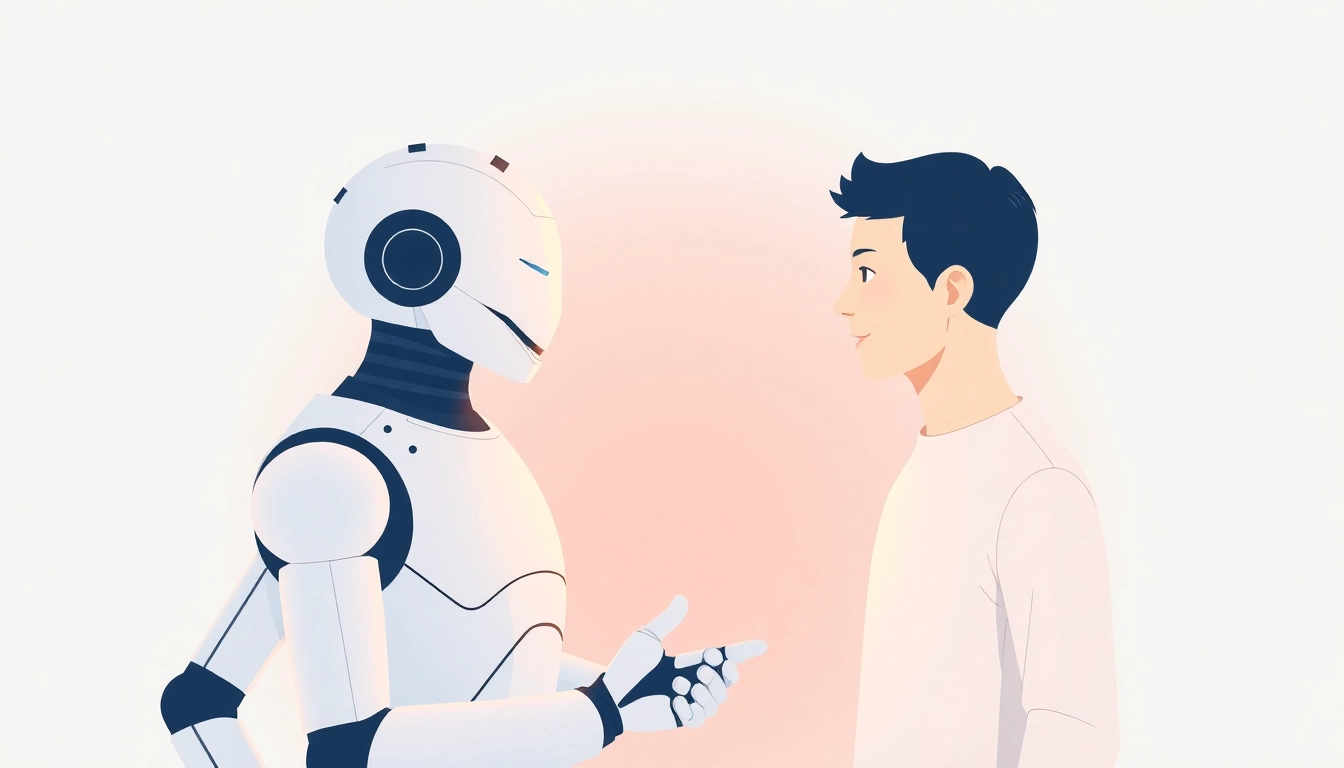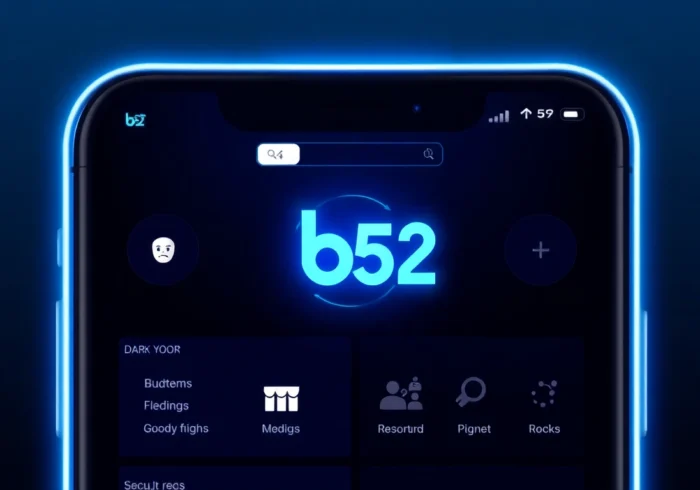Understanding the Human or Not AI Game: Concept and Mechanics
The convergence of artificial intelligence and human interaction has ushered in a new era of communication challenges and opportunities. At the forefront of this evolution is the captivating social game known as human or not. This game doesn’t just entertain; it serves as a crucial tool to explore our capacity to distinguish between genuine human interactions and AI-generated responses. As AI models like GPT-4 continue to grow more sophisticated, the lines between human and machine communication blur, making the human or not game a compelling and educational experience for players across the globe.
What Is the Human or Not AI Game and How Does It Work?
The core premise of the human or not game is simple yet profoundly challenging: engage in a brief, two-minute conversation with an anonymous chat partner—either a human or an AI bot—and then deduce who or what they are. The process involves real-time text exchanges where players must scrutinize responses, look for subtle cues, and rely on their intuition and critical thinking skills to make accurate judgments.
This interactive experience, available on platforms like human or not, emphasizes an easily accessible format—no downloads, no registration, just instant play. The game typically involves a brief chat window, where players ask questions, interpret replies, and then submit their guess at the end of the session. Its design leverages cutting-edge AI technologies to generate human-like responses, thereby increasing the difficulty and excitement of the challenge.
Strategies to Improve Your Human or Not Judgments
Mastering the art of distinguishing between AI and human responses requires more than just guesswork. Below are key strategies backed by research and practical experience:
- Observation of Response Patterns: Pay attention to the structure and flow of responses. Human responses tend to have more nuanced expressions, occasional grammatical errors, or emotional inflections, whereas AI responses—but increasingly sophisticated—may sometimes exhibit overly formal or overly perfect replies.
- Question Framing: Pose open-ended, ambiguous, or context-sensitive questions that challenge the AI’s capacity to generate contextually appropriate replies. For example, asking about personal experiences or opinions can reveal subtle differences in depth of understanding.
- Detecting Emotional Cues: Look for subtle emotional markers, humor, sarcasm, or idiomatic expressions. While AI models are improving in these areas, they still often falter in delivery and consistency.
- Identifying Inconsistencies: Test for inconsistencies or vague answers. Humans tend to connect responses coherently, whereas AI might produce inconsistent or contradictory replies over multiple exchanges.
Common Challenges in Differentiating AI from Humans
Despite advances, differentiating AI from humans in the human or not game presents several challenges:
- AI’s Rapid Improvement: Modern AI can mimic human conversation patterns convincingly, often passing as human in casual chats, which raises the difficulty level for players.
- Language Nuances and Context: AI’s understanding of context is improving, but idioms, cultural references, or emotional subtleties can still trip up even seasoned players.
- Player Bias and Overconfidence: Some players might default to assuming AI responses are human, especially if responses are surprisingly natural, leading to misjudgments.
- Limited Interaction Time: The brief two-minute window constrains the depth of interaction. Longer conversations might give more cues but are less practical in a casual gameplay setting.
Recognizing these challenges is essential to refining your detection skills and understanding the ongoing evolution of AI technology.
Maximizing Your Experience: Tips and Best Practices
Effective Questioning Techniques for Better Detection
Engaging in strategic questioning can significantly elevate your ability to identify whether you’re talking with a human or AI. Here are key techniques:
- Ask Personal and Subjective Questions: Inquire about preferences, experiences, or memories. Humans naturally provide richer, more nuanced answers.
- Introduce Ambiguity: Use questions that invite multiple interpretations, challenging the AI’s ability to respond appropriately.
- Test Emotional and Cultural Awareness: Questions about humor, idioms, or cultural references often reveal differences—humans tend to respond with contextual awareness, while AI may produce generic replies.
- Use Follow-Up Questions: Deepen the conversation with layered questions that require understanding previous responses, making AI responses more predictable or inconsistent.
Analyzing Response Patterns and Nuances
Beyond questions, analyzing the qualitative aspects of responses can unveil the true nature of your conversation partner:
- Consistency and Coherence: Humans often maintain thread coherence even across complex topics. AI might struggle with maintaining context over multiple exchanges.
- Depth of Knowledge: While AI has extensive information, it may lack genuine experiential insights or emotional depth.
- Response Timing: Slight delays or hesitations can indicate human responses, whereas AI processes responses instantly.
- Use of Humor and Sarcasm: These nuances are difficult for AI, making them valuable cues.
Mobile and Desktop: Seamless Play on Any Device
The human or not game is optimized for all devices, allowing users to enjoy the experience anywhere—be it desktop computers, tablets, or smartphones. The platform’s responsive design ensures fluid interactions and consistent gameplay, whether you’re on the go or at home. This accessibility encourages frequent practice, which continually sharpens your AI detection skills.
Technology Behind Human or Not AI: How It Powers the Game
State-of-the-Art AI Models: GPT-4 and Beyond
At the heart of the human or not platform are advanced AI models like GPT-4, which have revolutionized natural language processing (NLP). These models are trained on vast datasets, enabling them to generate human-like responses with remarkable nuance and contextual understanding. Their ability to mimic conversational patterns makes the game increasingly challenging and realistic.
Moreover, continuous training and updates ensure that AI responses evolve, mimicking human quirks and subtleties. Future iterations aim to incorporate multimodal capabilities, including voice and visual cues, further complicating detection but providing richer interaction experiences.
Ensuring User Safety and Privacy in AI Interactions
Protecting participant privacy and fostering a safe environment are priorities for the human or not platform. Conversations are strictly anonymous, with no personal data shared or stored without explicit consent. The platform employs encryption and adheres to rigorous privacy policies, demonstrating a commitment to user trust and compliance with data protection regulations like GDPR.
This security framework assures players that their participation is safe, encouraging honest and open interactions that reflect real-world social dynamics without compromising privacy.
Future Innovations in Human or Not and AI Detection
As AI technology advances, so too will the tools and methods used within the game. Future innovations could include:
- Enhanced Detection Algorithms: Using machine learning to analyze subtle cues that even seasoned humans might miss.
- Multimodal Communication: Incorporating voice, facial expressions, or gestures to deepen realism and assessment accuracy.
- Personalized Difficulty Settings: Adapting challenge levels based on user experience and detection success rates.
- Community-Led Development: Integrating feedback for continuous improvement and educational features.
Why Engaging with Human or Not AI Is Valuable
Enhancing Critical Thinking and Observation Skills
Participation in the human or not game sharpens essential cognitive skills. Players learn to detect inconsistencies, interpret linguistic cues, and analyze emotional undertones—capabilities vital in an AI-integrated future. These skills extend beyond gaming into realms such as digital literacy, cybersecurity, and interpersonal communication, fostering a more discerning digital citizenry.
Participating in Broader AI Awareness Conversations
The game acts as an interactive platform to promote awareness about AI’s growing role in daily life. By actively engaging with AI entities, players gain insights into how AI operates, its limitations, and ethical considerations surrounding its deployment. This contributes to a more informed society capable of making conscious decisions about AI adoption and regulation.
Comparing Performance and Learning from Results
Analyzing your success rate over multiple rounds provides valuable feedback. For instance, studies show that approximately 68% of players correctly identify AI responses, while about 73% accurately recognize humans. Tracking these metrics helps players improve and understand AI’s evolution, fostering a learning curve that evolves with advancing technology.
Getting Started: Join the Human or Not Community Today
Step-by-Step Guide to Playing Your First Round
- Visit the human or not platform.
- Select the ‘Start Game’ option to initiate a two-minute chat.
- Ask open-ended, personalized questions to your conversation partner.
- Observe response patterns, emotional cues, and language nuances diligently.
- After the chat, submit your guess—human or AI.
- Review the outcome and reflect on your detection process to enhance future judgments.
Sharing Tips and Experiences with Other Players
Community engagement enriches the experience. Participants often share their strategies, tricky questions, and detection stories through forums or social media. Reddit communities like r/Humanornot serve as vibrant spaces for tips, troubleshooting, and discussing the latest AI developments. Embracing community insights accelerates your learning curve and keeps you updated on emerging AI trends.
Accessing Resources and FAQs for Ongoing Support
The platform provides extensive resources, FAQs, and tutorials to ensure new players understand the game mechanics and safety protocols. For persistent questions or technical issues, dedicated support channels and online guides are readily available. Staying informed aids in making the most of your engagement and honing your detection skills.

